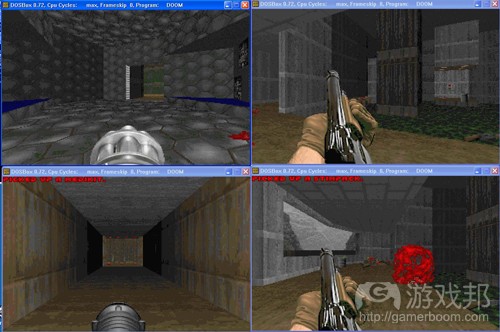开发者应讲究以游戏演示版本吸引用户的技巧
作者:Tadhg Kelly
游戏工作室通常会面临是否发布游戏演示版的问题。他们希望能够通过这种营销手段来获得顾客,但对将游戏内容公之于众感到害怕。
我的观点是:如果要发布演示版本的话,就要做得完整。否则,别浪费那个精力。
演示版的冲突
赛车游戏或许可以在Xbox Live上发布包括两辆车和一条赛道的可下载演示版。可以用这种方法来展示游戏引擎、游戏的基本想法和一两个额外的有趣成分。
此类演示版所利用的心理学就是:先提供免费的品尝,然后对剩余内容收费。这是因为开发商将自己视为内容制造者,因而所制造的内容就需要有一定的价值。但是,我认为这是开发商犯下的一个大错误。你或许认为自己在做的是一笔内容生意,但是实际上你在做的是寻找粉丝的生意。
演示版的核心冲突在于,只给予少部分游戏内容会提醒玩家以后肯定要为游戏付费。尽管你确实有盈利的动机,但是约会和lap dancing(游戏邦注:流行于新加坡的一种艳舞)。约会需要你做出很多努力,怀揣的是构建联系的想法。而lap dancing单纯只是为了拿钱。
粉丝并不喜欢后者,他们希望能够与开发商建立起联系,但是当金钱总是成为交谈的内容时,这种关系便很难建立起来。让玩家体验赛道后告知他们需要付费购买其他内容,这就像是在告诉他们你根本毫不在意玩家的感受。
最佳的演示版
当我在某个小型发行公司担任制作人的时候,我对他们游戏的表现做了些许调查。有些游戏有包含1个关卡的演示版,有些没有。令我感到惊奇的是,我发现那些有着微量内容演示版的游戏卖得还不如完全没有演示版的游戏。但是,那些演示版内容较多(游戏邦注:比如含有3个关卡)的游戏似乎能够带来更多的销售量。
作为玩家,我玩过的最棒的演示版是原版《毁灭战士》。id Software将游戏中1/3的内容制作成免费版本,在全世界广为流传,然后他们邀请玩家购买余下的2/3。《毁灭战士》前1/3的内容中包含大量的关卡和不同的敌人,甚至在关卡末尾还有BOSS战斗。游戏需要数小时才能够打通,而且还支持多人模式。
以上信息表明,成功的演示版需要一定时间来同玩家建立起联系。想要赚到钱,与玩家的对话就得离钱越远,这样游戏才越有可能受到玩家关注。这也是为何免费增值游戏能够发挥作用的原因。
是否发布演示版
你不一定需要制作演示版,演示版并非适合所有的游戏类型。许多大小游戏无需演示版依然进展良好,所以你的游戏可能也并不需要演示版。
某些市场可能特别需要演示版。比如,PC游戏玩家就特别需要演示版游戏,因为这些人已经因发行商凭借某些伎俩来骗取销量感到厌烦。对游戏不甚了解的人通常也会喜欢演示版,尤其是比较完善的演示版游戏。
如果你决定要制作演示版的话,至少要公布25%的内容。如果是个单人游戏的话,发布前1/4的关卡。如果是个多人游戏的话,发布多个地图、模式和供玩家体验的东西。先决定游戏的前1/4内容是什么,然后将其发布出去。
其次,让付费的到来显得自然些。比如,不要设定游戏时间,然后在玩家体验游戏的过程中索取金钱。这完全是类似于lap dancing的想法。
应该找到游戏中的自然付费点,比如像《毁灭战士》那样设在首部分的末尾。如果不确定的话,尽量在演示版中增加更多内容。你应当记住的是,你要做的是吸引用户,而不是欺骗用户,根据这个想法来设置演示版。即便他们没有真正购买游戏,他们也很可能会传播你的游戏,这样也算是让演示版本物尽其用。(本文为游戏邦/gamerboom.com编译,如需转载请联系:游戏邦)
GAMES MARKETING AND FREE CONTENT: TO DEMO OR NOT TO DEMO?
Tadhg Kelly
Free game demos: giving the game away?
Sharna Jackson tweeted me, asking:
what’s the verdict on playable demos? Just trying to decide if we need one on an app we’re developing for 8+
And it’s an excellent question. Studios often get caught on the subject of whether they should give away a demo of their game, or leave it alone. The prospect is that they will acquire customers through this marketing effort, but the fear is that they will effectively give the store away.
Here’s my view: If you’re going to give away a demo, make it substantial. Otherwise, don’t bother.
The demo conflict
A racing game might have a downloadable demo on Xbox Live that includes two cars and a track. It shows the game engine, the basic idea of the game and one or two extra fun parts, but the pay wall comes down pretty quickly.
The psychology of this kind of demo is that of lap dancing: Give a free taste, then charge a premium for the rest. It comes from developers thinking of themselves as content makers, and so therefore the content has an enumerated value. However, as I wrote in the Love Your Pirates article, this is a critical mistake that developers make. You may think you are in the content business, but you are not. You are in the fan-finding business.
The conflict at the heart of the demo is that only giving a small amount of your game away reminds players that you are in it for the money. While you do have a profit motive, there is a difference between dating and lap dancing. Dating involves a lot of effort on your part, but with the idea of building a relationship. Lap dancing, on the other hand, is a quick thrill before demanding to get paid.
Fans are not looking to be lap danced. They are looking for a relationship, but relationships never work when money is a constant part of the conversation. Telling a player that they have had their go of a racing track and now it’s time to pay up is only telling them that you do not care.
The best demo ever
When I worked as a producer for a small publishing outfit I did some research on the performance of their games. Some of them included one-level style demos and some them did not. To my surprise, I found that games with small demos frequently sold worse than those with no demos at all. Those with more significant demos (3 levels) seemed to encourage more sales however.
As a player, the best demo that I ever played was that for the original Doom. In a fit of genius, iD released a whole third of their game as a freeware version that passed around the world like wildfire, and they invited players to buy the remaining two thirds. That first third of Doom included lots of levels, different enemies and even a boss fight at the end. It took hours to play and also supported multiplayer gaming.
What both of these pieces of information tell me is that successful demos take their time to form bonds with players. The longer they wait before talking about the money, and the less intrusive that conversation is, the more likely that your game will embed in the player’s mind. Taken to the extreme, this is why freemium games work: What is a freemium experience if not an endless bond formation exercise that will one day turn into a sale?
Demo or no
You don’t have to make a demo. Demos are not suited to all game types equally and there’s nothing wrong with admitting that up front. Players will choose to purchase or not, but either way the money question is simple and clear and they will respond in a fair fashion. Plenty of big and small games have trucked along quite nicely without ever needing a demo, so you may not need one.
Some markets are more expectant of demos than others. The PC gamer tribe expects demos, for example, because it is a technically literate audience that is tired of being cheated by publishers who use cheap tricks to squeeze a sale. Muggles also often like demos, especially substantial ones.
If you do decide to make a demo, give at least 25% of your game away. So if it’s a single player game, give away the first quarter of the levels. If it’s a multiplayer game, give away several maps, modes and things to play with. Figure out what a quarter of your game looks like and then give it away.
Secondly, make the paywall come in at a natural point. Don’t, for example, set a gameplay time limit of an hour and interrupt the player mid-session to demand money.
That’s lap dancer thinking.
Find natural points in the game instead, such as the end of the first segment like Doom did it. If in doubt, give more rather than less. Always remember that fans want to be seduced, not scammed, and set your demo up accordingly. Even if they do not actually make a purchase they will be more likely to evangelise on your behalf, and so the demo’s true function (telling your marketing story) is fulfilled either way.
Good demos are all about dating, so don’t move in for the kiss before you’ve bought the dinner. (Source: Games Brief)
上一篇:成功独立游戏项目的9大普遍元素
下一篇:关于免费增值模式的类型及使用方法








































 闽公网安备35020302001549号
闽公网安备35020302001549号